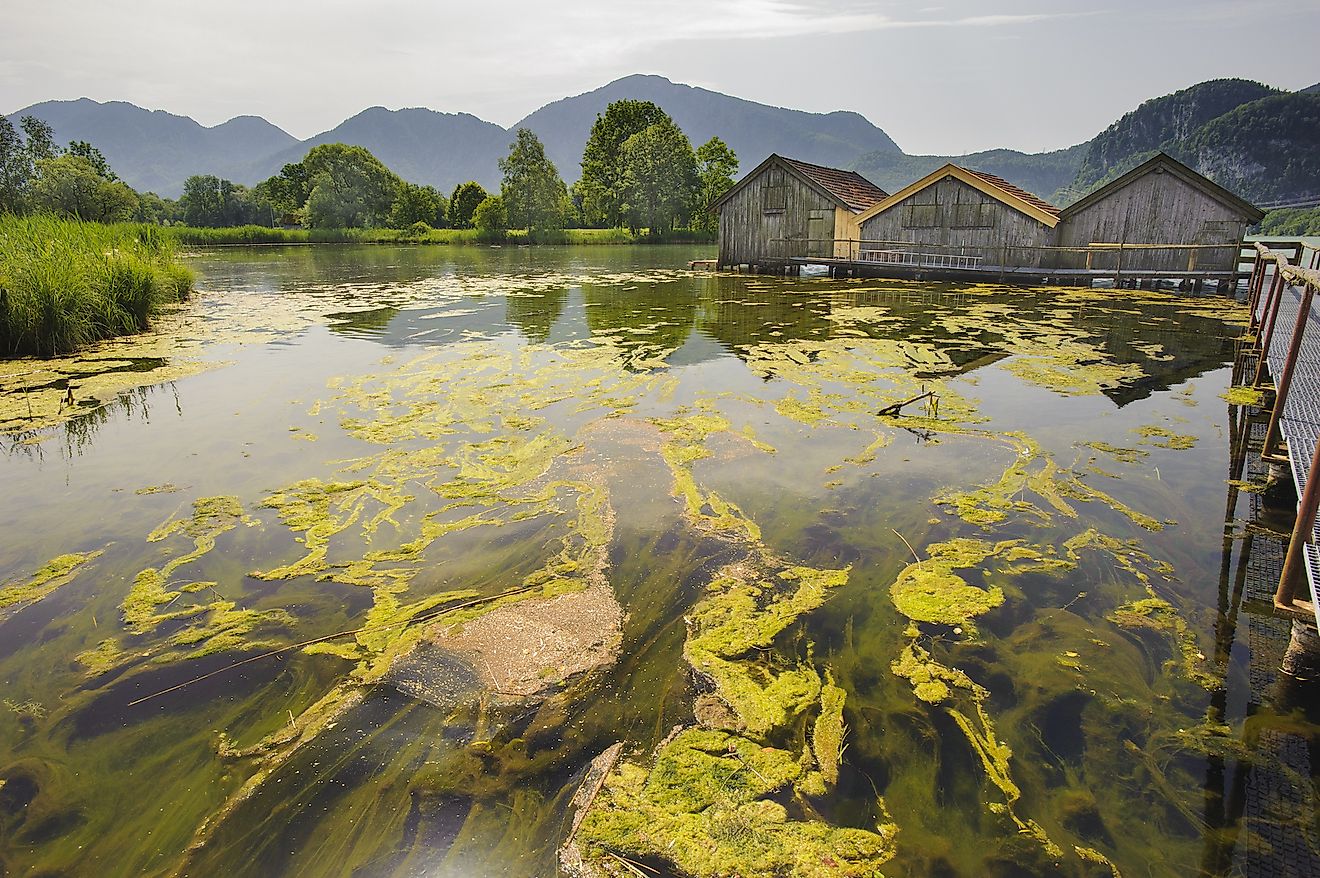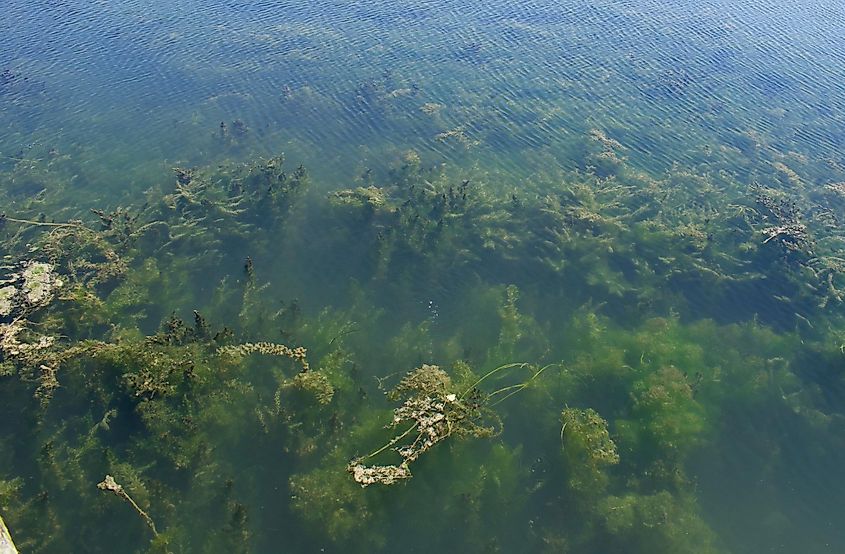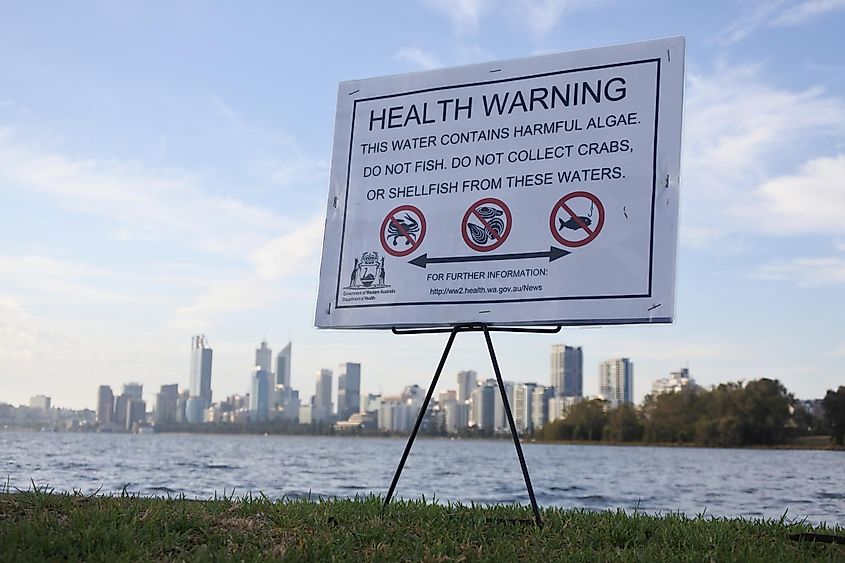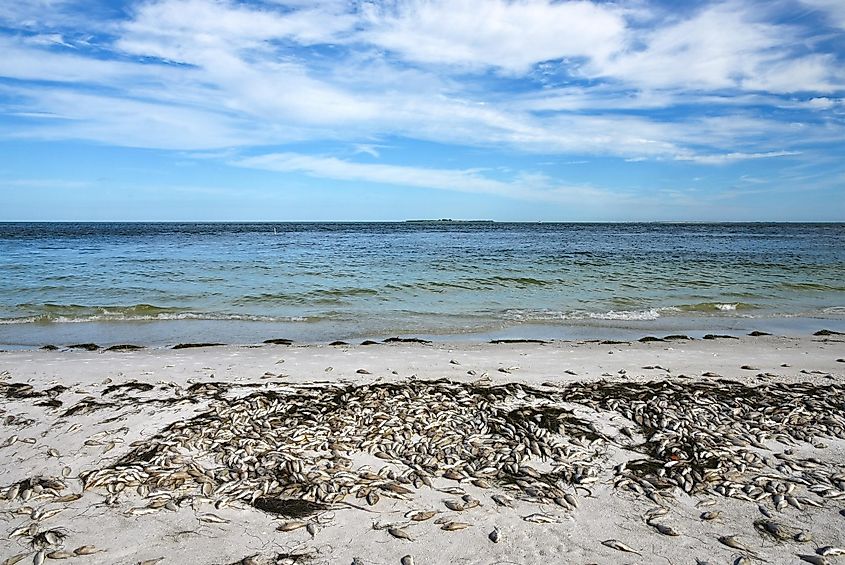What Is Algal Bloom?

- The growth of algal blooms results from various factors such as nutrient surplus, temperature, sunlight, and hydrology.
- Specific algae species produce neurotoxins that can have severe biological impacts on humans and wildlife.
- Some algal blooms may discolor the water due to the high density of pigmented cells. These colors can be green, red, blue-green, or yellowish-brown.
Algal blooms, also called marine or water blooms, are when the algae population rapidly increases in an aquatic system. Algae are large groups of plant-like organisms found in all types of water, from salt to freshwater. They vary in size from tiny microalgae to very large macroalgae. Algae can be considered blooming if the concentrations are in the hundreds of thousands of cells per millimeter.
Some algal blooms may discolor the water due to the high density of pigmented cells. These colors can be green, red, blue-green, or yellowish-brown. Algal blooms can also look like foam, mats, scum, or clumps floating on the water’s surface, while other blooms are not visible to the human eye. For the most part, algal blooms float on the surface of a body of water. Blooms can be suspended at different depths and can adjust buoyancy depending on the conditions. For example, they can move to areas where there are more nutrients and light. Windy days may push algal blooms towards the shore, where they’ll accumulate.
Where Do They Occur?

Algal blooms can occur in many marine environments across North America. Lake Winnipeg in Canada has had a steady increase in algal coverage over the last 30 years. The algae have been threatening wildlife, tourism, and the fishing industry. The situation in Lake Winnipeg was severe enough to be classified as the World’s Most Threatened Lake due to the algal bloom problem. Similarly, algal blooms are affecting the coastal and Great Lakes states in the United States. For example, Lake Erie has had eutrophication issues for decades.
Causes Of Algal Blooms
Algal blooms materialize when algae multiply rapidly. The growth of algal blooms results from various factors such as nutrient surplus, temperature, sunlight, and hydrology. One of the leading causes of algal blooms is the excess of nutrients like phosphorus and nitrogen. Algae needs these nutrients to grow, but too much can disrupt the natural balance. Climate change may also cause an increase in the prevalence and number of blooms and may exacerbate the problem. During warmer temperatures, algae may grow very fast and form blooms. These blooms may become more frequent as the earth warms and nutrient levels in the waters increase.
As algae and plants die, the dead organic matter becomes food for bacteria, increasing the amount of food available in the water. As a result, bacteria numbers increase and use up the dissolved oxygen in the water. With oxygen levels decreasing, fish and aquatic animals cannot survive, resulting in a dead area. This reaction is called eutrophication, when water bodies become saturated with nutrients, resulting in plant and algae growth. Some of the causes of increased nutrients are human pollution, such as manure and fertilizer runoff. However, natural processes such as the gradual accumulation of nutrients or organic matter can also cause eutrophication.
What Are Harmful Algal Blooms?

Most blooms are generally harmless and can be beneficial. Algae is a major food source for many organisms and is essential in the earth’s ecosystem as they produce oxygen. However, some algae species produce neurotoxins. The toxins can have severe biological impacts on wildlife if the cell concentrations are high. Algal blooms made up of phytoplankton are known to produce biotoxins and are called harmful algal blooms, or HABs.
HABs occur when algae grow rapidly and create toxins that can cause harm to people, animals, and the environment. Various organisms such as harmful phytoplankton, cyanobacteria, benthic algae, and microalgae cause HABs to form. HABs can appear in multiple colors and look like foam or scum floating on the surface of the water. HABs can occur in warm freshwater, brackish water (mixture of fresh and saltwater), or marine waters with large amounts of nutrients.
HABs have been found in all US coastal states, and their occurrence may be increasing. They affect the health of people, marine ecosystems, and local and regional economies.
Effects Of Algal Blooms
HABs can cause several human illnesses ranging from debilitating to fatal, but they are quite rare. Algae that are not necessarily harmful still cause unpleasant odors and ruin the visual enjoyment of lakes. Algal blooms can also interfere with the water’s safety as they can become unsuitable for swimming or diving because they can obscure possible dangers underneath the water’s surface. People can also accidentally swallow contaminated water while performing aquatic activities. Algal blooms may also render the water unsuitable for municipalities, various industries, and many more.
Under the right conditions, some algae produce toxins that can cause skin and eye irritation with direct contact. HABs that have excessive levels of toxins can also be incredibly harmful to fish and wildlife. HABs can poison humans and animals that live near the water and drink or swim in it. People and animals can also become ill after consuming creatures contaminated with algal toxins.
HABs that occur in saltwater are sometimes called “tides” based on the color of the bloom. Along the Gulf Coast of Florida, an organism called Karenia brevis forms the red tides found in the ocean. Red tides are particularly harmful because the Karenia brevis produces a neurotoxin called brevetoxin that, if inhaled, can irritate the throat and lungs.

Freshwater HABs, found in lakes and rivers, are most commonly formed from the blue-green-hued cyanobacteria, also called blue-green algae. When blue-green algae proliferate, they create algae blooms that can cloud up water and form scums on the surface. Cyanobacteria do not cause infections in people but produce toxic substances that humans may accidentally breathe in or ingest.
Algal blooms can also become dense enough to block the sunlight from reaching the lower depths of the water. It also removes some oxygen from the water as the algae decompose, starving fish and plants of oxygen and damaging the local ecology. Blooms can also create dead zones in the water, which are areas with less dissolved oxygen.
Many factors can cause algae to multiply to produce algal blooms. While some blooms are harmless, some HABs can cause severe illness in humans and wildlife and can even be fatal in some cases.











